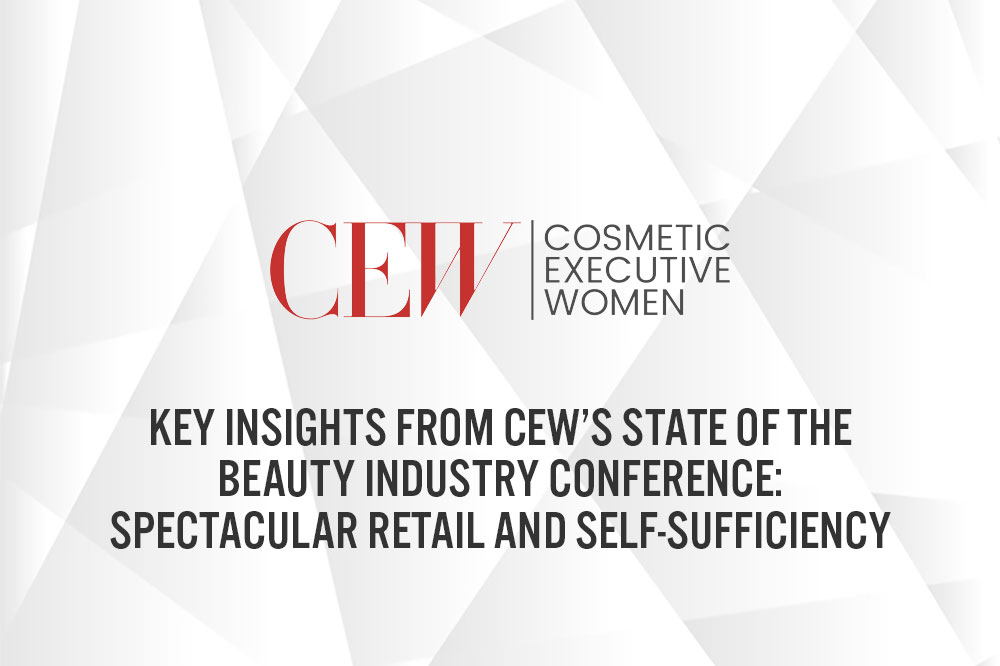
DIpil Das
CEW has a global community of over 10,000 members. On July 21, 2020, it hosted the annual State of the Beauty Industry conference as a virtual event for the first time. Carlotta Jacobson, President at CEW, kicked off the conference and highlighted that its digital nature had enabled more industry leaders to participate.
[caption id="attachment_113275" align="aligncenter" width="700"] Carlotta Jacobson, President at CEW; Lisa Klein, SVP at CEW
Carlotta Jacobson, President at CEW; Lisa Klein, SVP at CEW
Source: CEW [/caption] The conference featured presentations about the impact of Covid-19 on the beauty market, consumer behavior shifts, category preferences and outlooks for the future. We discuss the key insights from the event in this report. Deborah Weinswig, CEO and Founder of Coresight Research, discusses spectacular retail in China’s beauty industry
Deborah Weinswig, CEO and Founder of Coresight Research, discusses spectacular retail in China’s beauty industry
Source: Coresight Research [/caption] The annual growth of beauty sales has averaged 13.2% over the past 10 years, and during Covid-19, monthly beauty sales saw a year-over-year increase of 1.1% from January to June 2020 compared to the same period in 2019. This continued growth, even during times of adversity, can be attributed in part to China’s spectacular retail model—in which engaging strategies are blended with technologies, and digital marketing and shopping formats are optimized through an AI-enabled supply chain, as shown below. [caption id="attachment_113277" align="aligncenter" width="700"]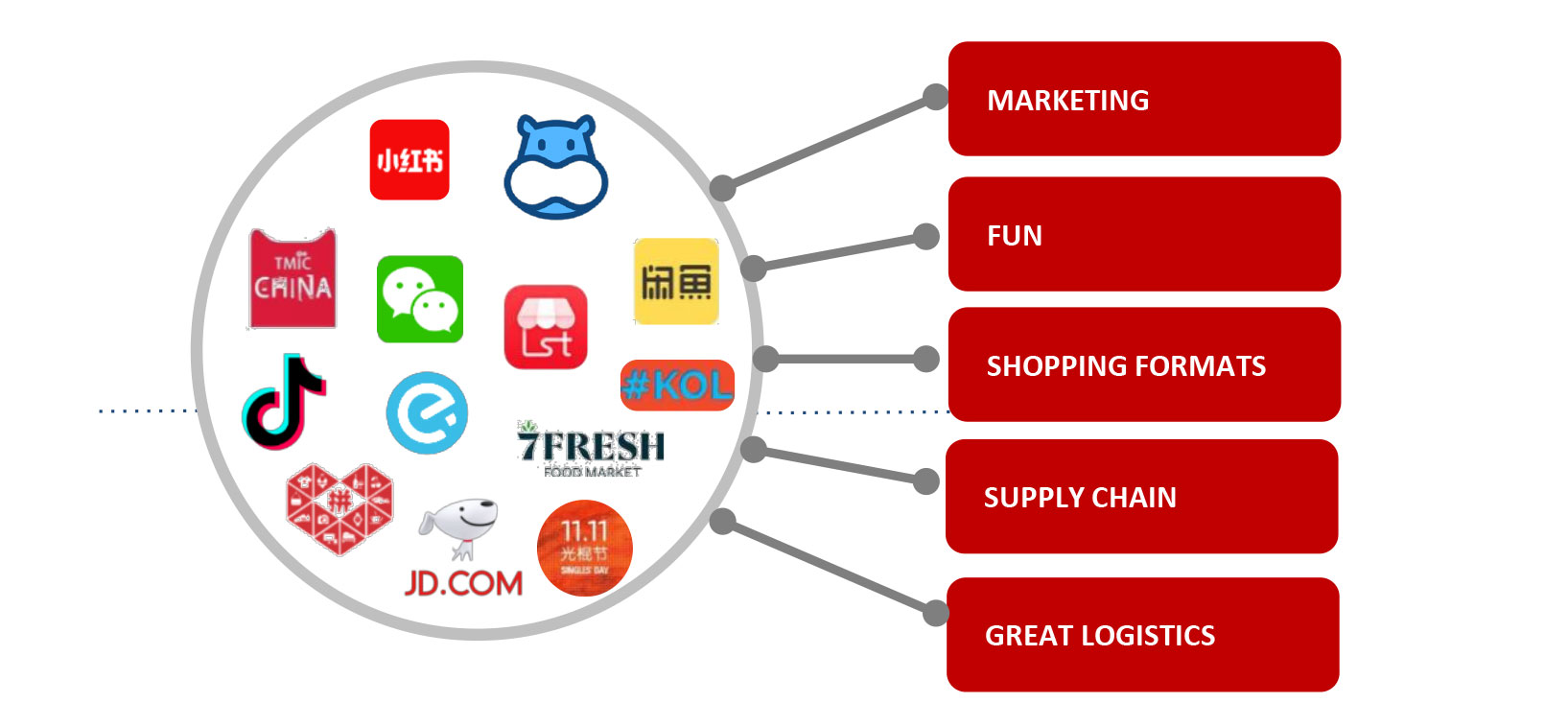 Source: Coresight Research[/caption]
The eight spectacular retail strategies outlined by Weinswig are as follows:
Marketing:
1. Livestreaming is projected to be a $135 billion industry in 2020 in China, according to iiMedia, representing spectacular retail’s number-one marketing strategy for connecting brands to consumers.
2. Grass planting and cultivating is a retail marketing strategy whereby brands use multiple touchpoints on social media to create consumer demand.
Fun:
3. Brands use influencers (key opinion leaders and celebrities) to educate and entertain consumers.
4. Festivals are a spectacular retail strategy to use fun to generate revenue both online and offline.
Shopping Formats
5. Group buying is an emerging spectacular retail shopping format, particularly in lower-tier cities, where consumers join together to access savings.
6. Virtual beauty try-on technology is a spectacular retail shopping format that is helping consumers to experience beauty in a new way in the physical and digital world.
Supply Chain
7. Smart shelf technology leverages an AI-enabled supply chain, assisting consumers in stores with product details and helping merchants with inventory.
Logistics
8. Taobao added a one-hour delivery service in June 2020, credit to its spectacular retail logistics strategy focused on last-mile delivery.
Source: Coresight Research[/caption]
The eight spectacular retail strategies outlined by Weinswig are as follows:
Marketing:
1. Livestreaming is projected to be a $135 billion industry in 2020 in China, according to iiMedia, representing spectacular retail’s number-one marketing strategy for connecting brands to consumers.
2. Grass planting and cultivating is a retail marketing strategy whereby brands use multiple touchpoints on social media to create consumer demand.
Fun:
3. Brands use influencers (key opinion leaders and celebrities) to educate and entertain consumers.
4. Festivals are a spectacular retail strategy to use fun to generate revenue both online and offline.
Shopping Formats
5. Group buying is an emerging spectacular retail shopping format, particularly in lower-tier cities, where consumers join together to access savings.
6. Virtual beauty try-on technology is a spectacular retail shopping format that is helping consumers to experience beauty in a new way in the physical and digital world.
Supply Chain
7. Smart shelf technology leverages an AI-enabled supply chain, assisting consumers in stores with product details and helping merchants with inventory.
Logistics
8. Taobao added a one-hour delivery service in June 2020, credit to its spectacular retail logistics strategy focused on last-mile delivery.
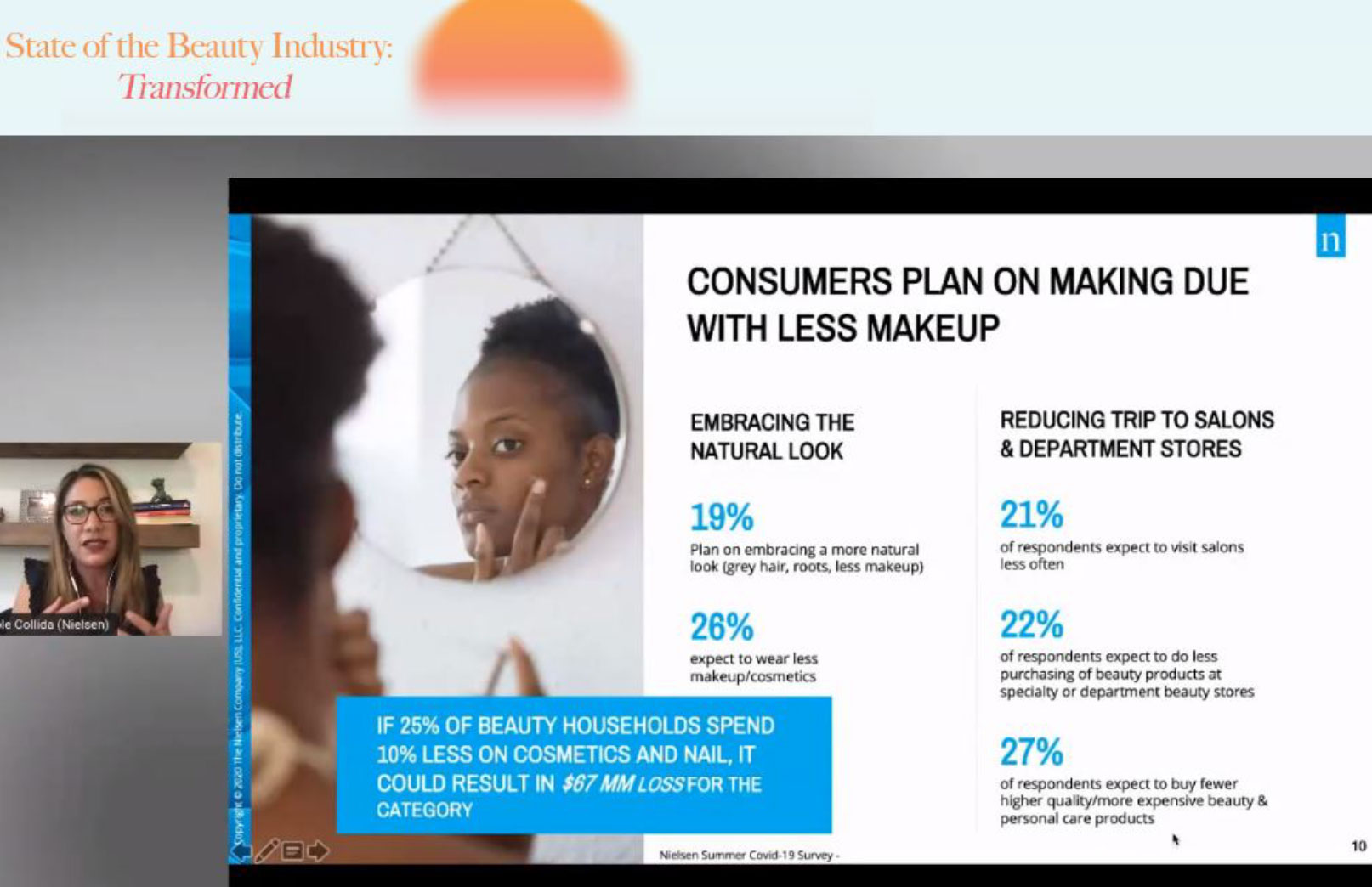 Source: CEW/Nielsen[/caption]
Source: CEW/Nielsen[/caption]
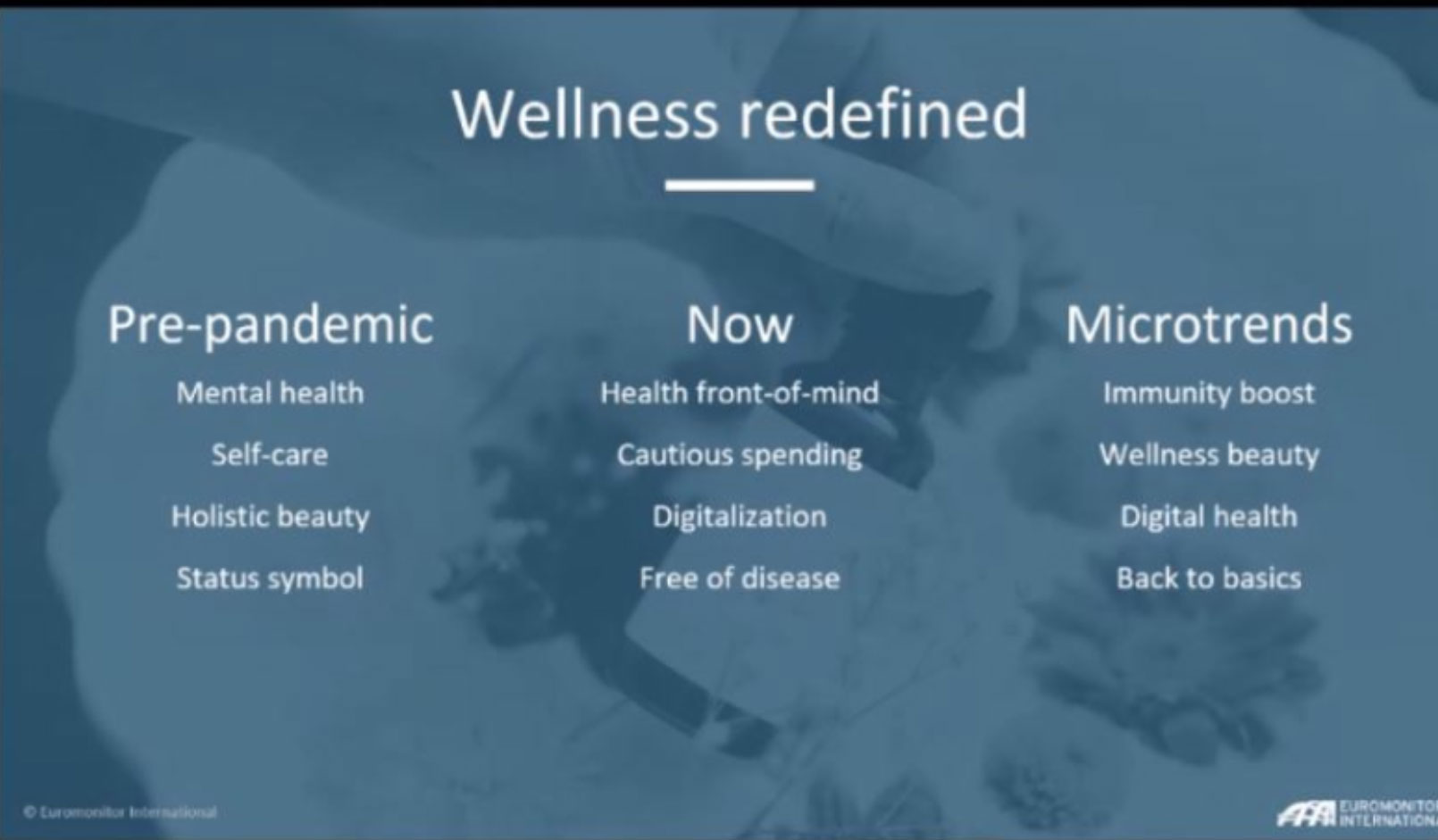 Source: CEW/Euromonitor International[/caption]
[caption id="attachment_113280" align="aligncenter" width="700"]
Source: CEW/Euromonitor International[/caption]
[caption id="attachment_113280" align="aligncenter" width="700"]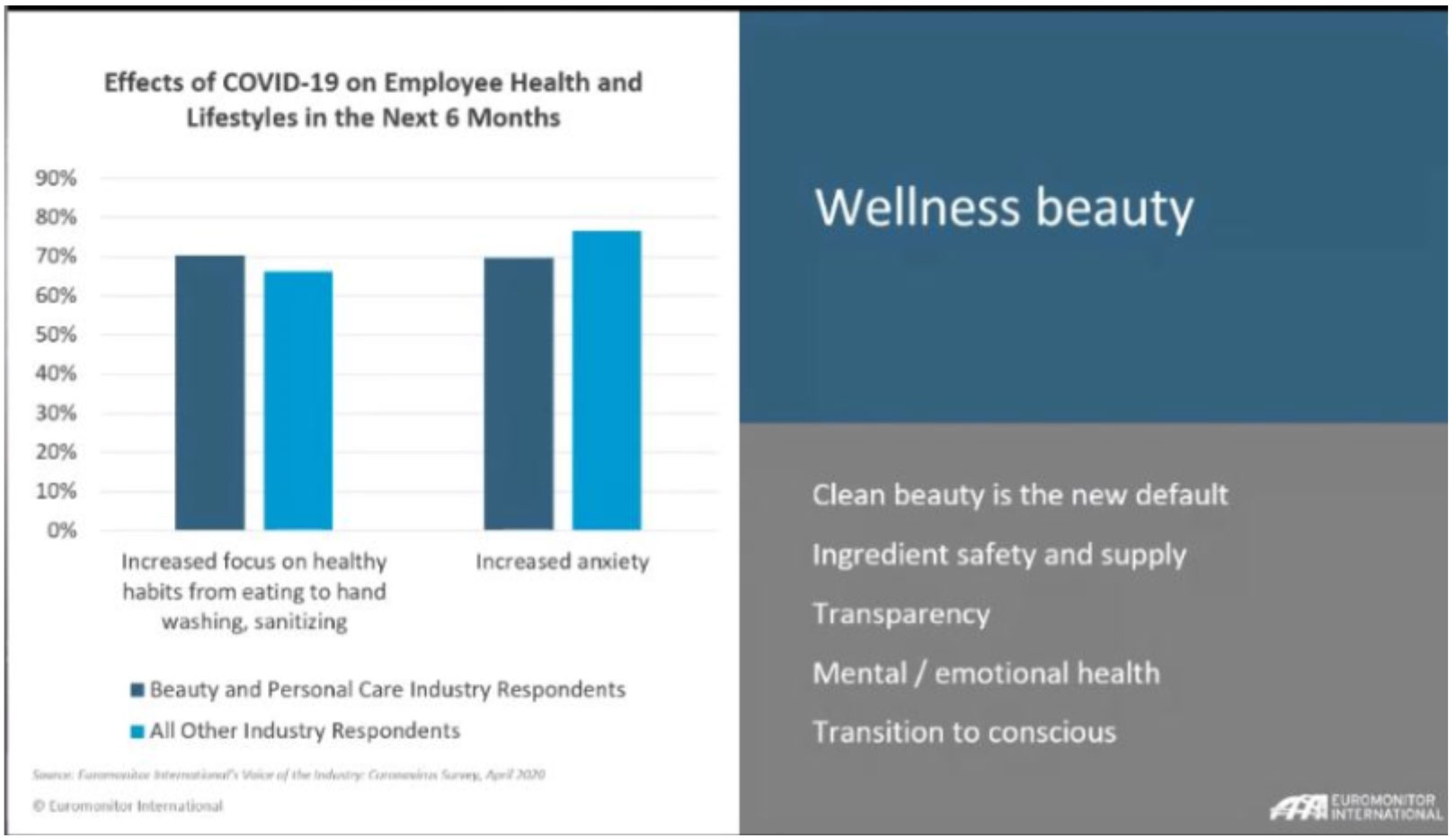 Source: CEW/Euromonitor International[/caption]
Source: CEW/Euromonitor International[/caption]
 Source: CEW/Stella Rising[/caption]
Source: CEW/Stella Rising[/caption]
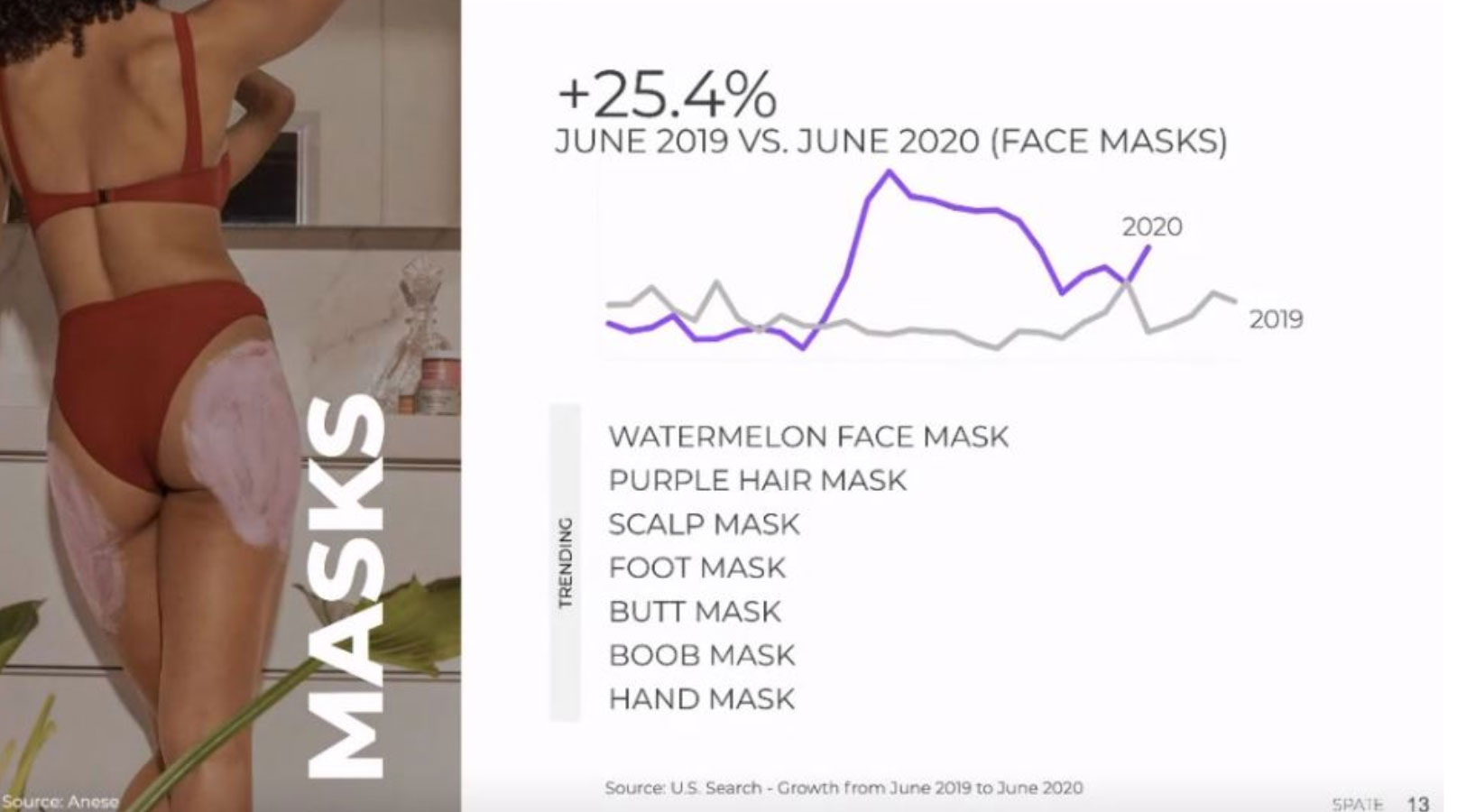 Source: Spate[/caption]
For self-sufficiency, one clear example is the popularity of products that enable at-home spa treatments, as consumers cannot access services outside of the home. Popular products include facial steamers, derma rollers (which are now being dual-purposed as beard enhancers) and skincare fridges. At-home gyms and offices have also been trending. Spate projected that this trend will continue as consumers become more self-reliant for beauty treatments.
[caption id="attachment_113283" align="aligncenter" width="700"]
Source: Spate[/caption]
For self-sufficiency, one clear example is the popularity of products that enable at-home spa treatments, as consumers cannot access services outside of the home. Popular products include facial steamers, derma rollers (which are now being dual-purposed as beard enhancers) and skincare fridges. At-home gyms and offices have also been trending. Spate projected that this trend will continue as consumers become more self-reliant for beauty treatments.
[caption id="attachment_113283" align="aligncenter" width="700"]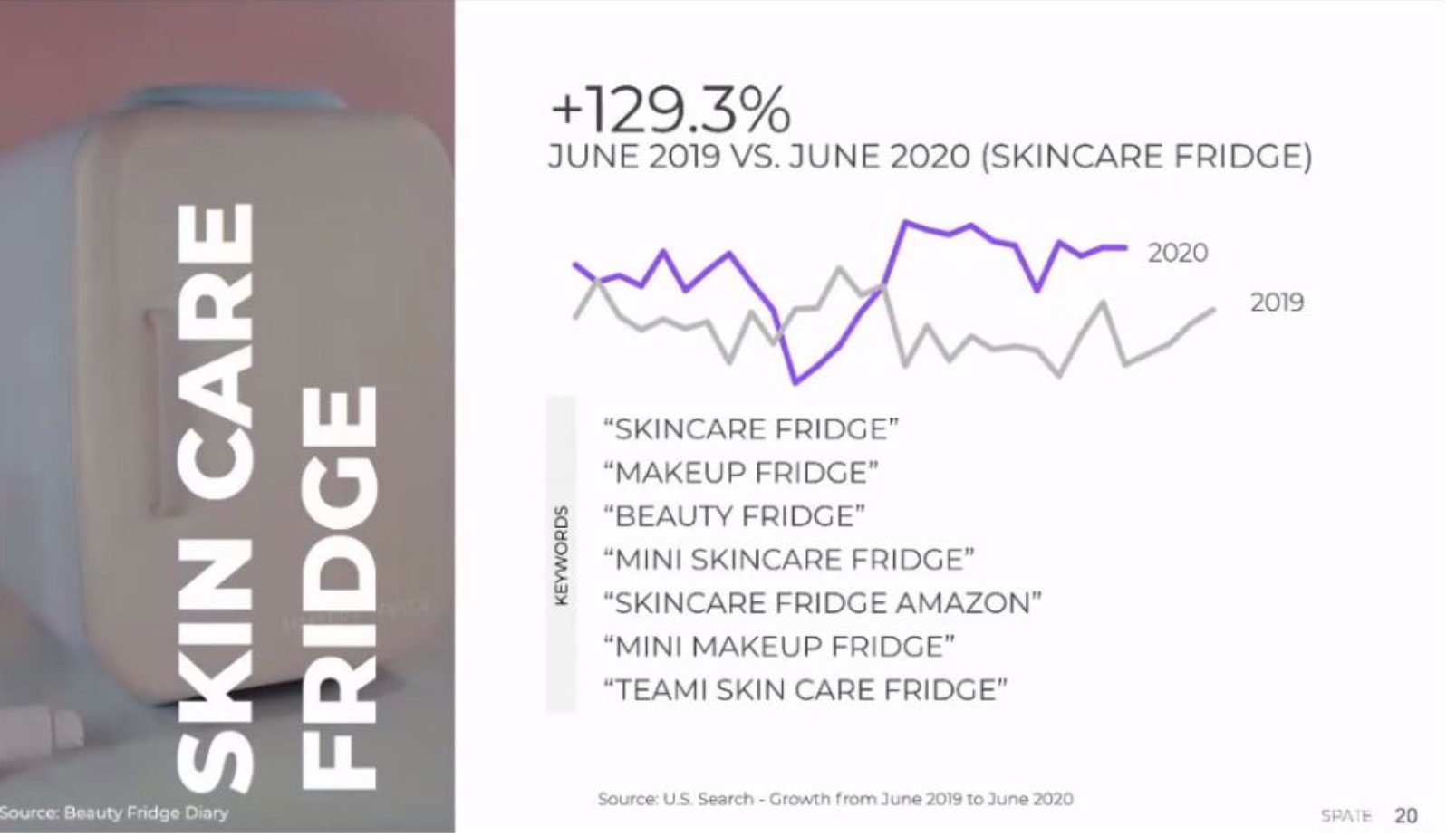 Source: Spate[/caption]
Source: Spate[/caption]
 Carlotta Jacobson, President at CEW; Lisa Klein, SVP at CEW
Carlotta Jacobson, President at CEW; Lisa Klein, SVP at CEW Source: CEW [/caption] The conference featured presentations about the impact of Covid-19 on the beauty market, consumer behavior shifts, category preferences and outlooks for the future. We discuss the key insights from the event in this report.
Beauty Growth in China Is Being Accelerated by Spectacular Retail Strategies
As part of the presentation, “Beauty Insights from China,” Deborah Weinswig, CEO and Founder of Coresight Research, highlighted eight spectacular retail strategies that beauty brands have used in China to drive growth. [caption id="attachment_113276" align="aligncenter" width="700"] Deborah Weinswig, CEO and Founder of Coresight Research, discusses spectacular retail in China’s beauty industry
Deborah Weinswig, CEO and Founder of Coresight Research, discusses spectacular retail in China’s beauty industry Source: Coresight Research [/caption] The annual growth of beauty sales has averaged 13.2% over the past 10 years, and during Covid-19, monthly beauty sales saw a year-over-year increase of 1.1% from January to June 2020 compared to the same period in 2019. This continued growth, even during times of adversity, can be attributed in part to China’s spectacular retail model—in which engaging strategies are blended with technologies, and digital marketing and shopping formats are optimized through an AI-enabled supply chain, as shown below. [caption id="attachment_113277" align="aligncenter" width="700"]
 Source: Coresight Research[/caption]
The eight spectacular retail strategies outlined by Weinswig are as follows:
Marketing:
1. Livestreaming is projected to be a $135 billion industry in 2020 in China, according to iiMedia, representing spectacular retail’s number-one marketing strategy for connecting brands to consumers.
2. Grass planting and cultivating is a retail marketing strategy whereby brands use multiple touchpoints on social media to create consumer demand.
Fun:
3. Brands use influencers (key opinion leaders and celebrities) to educate and entertain consumers.
4. Festivals are a spectacular retail strategy to use fun to generate revenue both online and offline.
Shopping Formats
5. Group buying is an emerging spectacular retail shopping format, particularly in lower-tier cities, where consumers join together to access savings.
6. Virtual beauty try-on technology is a spectacular retail shopping format that is helping consumers to experience beauty in a new way in the physical and digital world.
Supply Chain
7. Smart shelf technology leverages an AI-enabled supply chain, assisting consumers in stores with product details and helping merchants with inventory.
Logistics
8. Taobao added a one-hour delivery service in June 2020, credit to its spectacular retail logistics strategy focused on last-mile delivery.
Source: Coresight Research[/caption]
The eight spectacular retail strategies outlined by Weinswig are as follows:
Marketing:
1. Livestreaming is projected to be a $135 billion industry in 2020 in China, according to iiMedia, representing spectacular retail’s number-one marketing strategy for connecting brands to consumers.
2. Grass planting and cultivating is a retail marketing strategy whereby brands use multiple touchpoints on social media to create consumer demand.
Fun:
3. Brands use influencers (key opinion leaders and celebrities) to educate and entertain consumers.
4. Festivals are a spectacular retail strategy to use fun to generate revenue both online and offline.
Shopping Formats
5. Group buying is an emerging spectacular retail shopping format, particularly in lower-tier cities, where consumers join together to access savings.
6. Virtual beauty try-on technology is a spectacular retail shopping format that is helping consumers to experience beauty in a new way in the physical and digital world.
Supply Chain
7. Smart shelf technology leverages an AI-enabled supply chain, assisting consumers in stores with product details and helping merchants with inventory.
Logistics
8. Taobao added a one-hour delivery service in June 2020, credit to its spectacular retail logistics strategy focused on last-mile delivery.
Nielsen’s Covid-19 Survey Outcomes: Potential $67 Million Category Loss
Nicole Collida, SVP of Brand Effectiveness Sales at Nielsen, presented on “The State of Mass Beauty: Beauty & Personal Care Resilience,” highlighting consumer purchasing decisions during Covid-19 and expected future trends. According to Nielsen’s summer Covid-19 study, 55% of consumers reported that the earliest they will return to work is in three months or more. Moreover, 26% of consumers expect to wear less makeup and 27% plan on buying fewer high-quality products post pandemic. Additionally, 21% of respondents reported that they are going to visit salons less. Nielsen estimated that if 25% of households spend 10% less on cosmetics and nails, it will result in a $67 million loss for the category. [caption id="attachment_113278" align="aligncenter" width="700"] Source: CEW/Nielsen[/caption]
Source: CEW/Nielsen[/caption]
Beauty Wellness Redefined: Focus on Health
In the presentation, “Beauty Beyond 2020: Top Themes Emerging from Covid-19,” Kayla Villena, Euromonitor’s Senior Beauty Analyst, outlined consumer habits and preferences during the pandemic that are helping to inform future shopping trends. For example, 54% of consumers associate beauty with health, and wellness beauty is shifting its focus to taking vitamins and supplements for immune-system health. Villena explained that consumers are focusing on healthy habits, with mental health and reducing anxiety taking priority. Consumers are going “back to basics” by bringing the basic principles of health to the fore. [caption id="attachment_113279" align="aligncenter" width="700"] Source: CEW/Euromonitor International[/caption]
[caption id="attachment_113280" align="aligncenter" width="700"]
Source: CEW/Euromonitor International[/caption]
[caption id="attachment_113280" align="aligncenter" width="700"] Source: CEW/Euromonitor International[/caption]
Source: CEW/Euromonitor International[/caption]
Online Beauty Shopper Habits
According to a survey of over 25,000 influencers, conducted by digital media and marketing agency Stella Rising in June 2020, the top response to, “Which of the following websites do you purchase beauty from?” was Amazon.com, with 77% of consumers selecting this option. Other popular destinations included Ulta Beauty (61%), Sephora (56%), Walmart (53%) and Target (44%). [caption id="attachment_113281" align="aligncenter" width="700"] Source: CEW/Stella Rising[/caption]
Source: CEW/Stella Rising[/caption]
Top Beauty Trends: “Back to Basics” and “Self-Sufficiency”
Data analysis company Spate tracked over 10 billion online search signals in beauty and wellness to isolate consumer trends. The company identified two major trends that are spanning all categories, not just beauty. These are “back to basics,” which helps the consumer to feel comforted, and “self-sufficiency,” which helps the consumer to take care of themselves. For example, in the food and beverages category, Spate found that as the US entered the Covid-19 pandemic, keto and vegan diets were two of the biggest search trends. However, these trends have since been replaced with comfort-seeking searches—including for wine, alcohol delivery services, sourdough bread making and complex cooking recipes. In other words, aspiration is no longer as important to the consumer as comfort. For beauty, this translates to at-home self-care trends such as different types of body masks (as shown in the image below). [caption id="attachment_113282" align="aligncenter" width="700"] Source: Spate[/caption]
For self-sufficiency, one clear example is the popularity of products that enable at-home spa treatments, as consumers cannot access services outside of the home. Popular products include facial steamers, derma rollers (which are now being dual-purposed as beard enhancers) and skincare fridges. At-home gyms and offices have also been trending. Spate projected that this trend will continue as consumers become more self-reliant for beauty treatments.
[caption id="attachment_113283" align="aligncenter" width="700"]
Source: Spate[/caption]
For self-sufficiency, one clear example is the popularity of products that enable at-home spa treatments, as consumers cannot access services outside of the home. Popular products include facial steamers, derma rollers (which are now being dual-purposed as beard enhancers) and skincare fridges. At-home gyms and offices have also been trending. Spate projected that this trend will continue as consumers become more self-reliant for beauty treatments.
[caption id="attachment_113283" align="aligncenter" width="700"] Source: Spate[/caption]
Source: Spate[/caption]